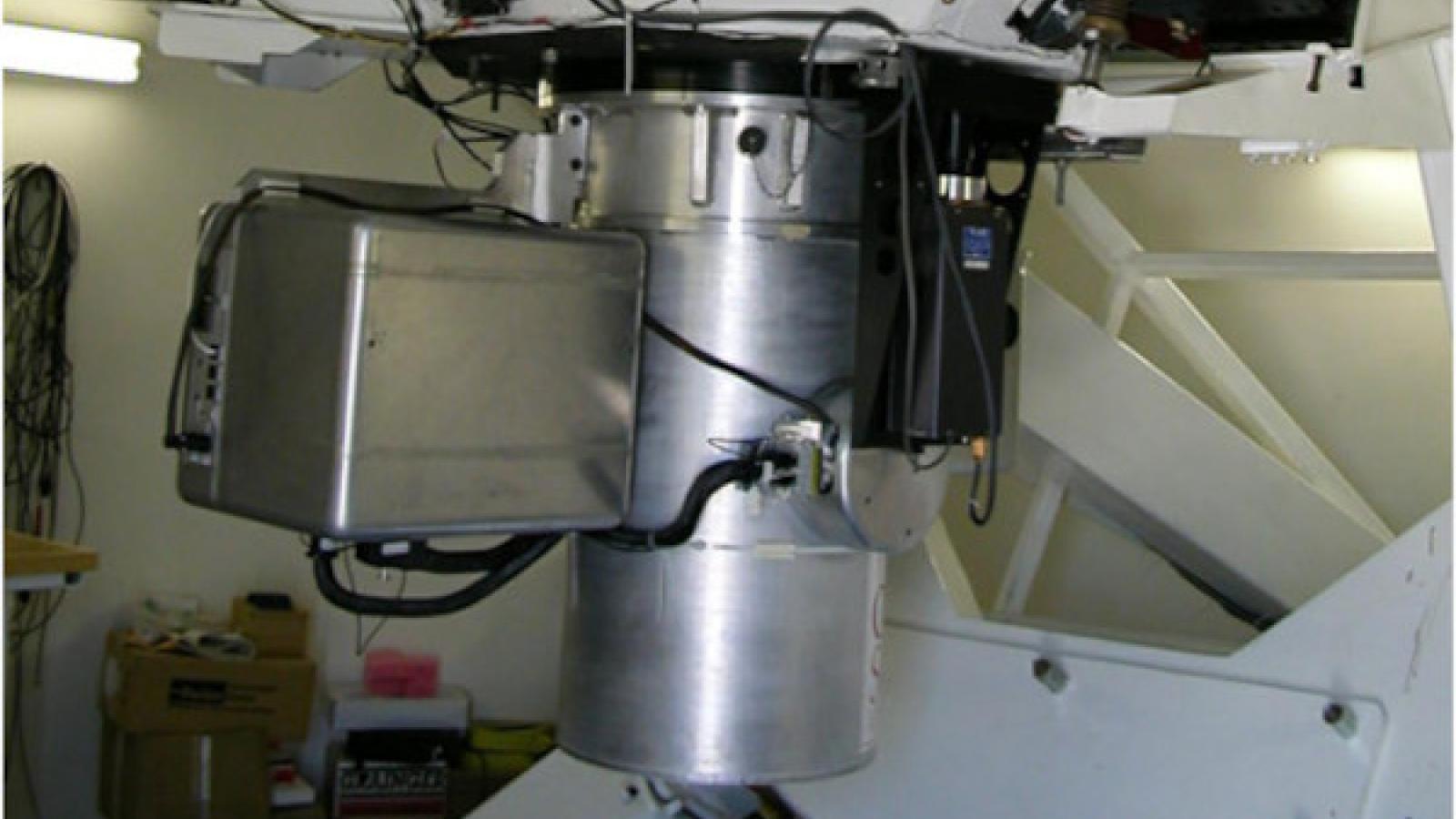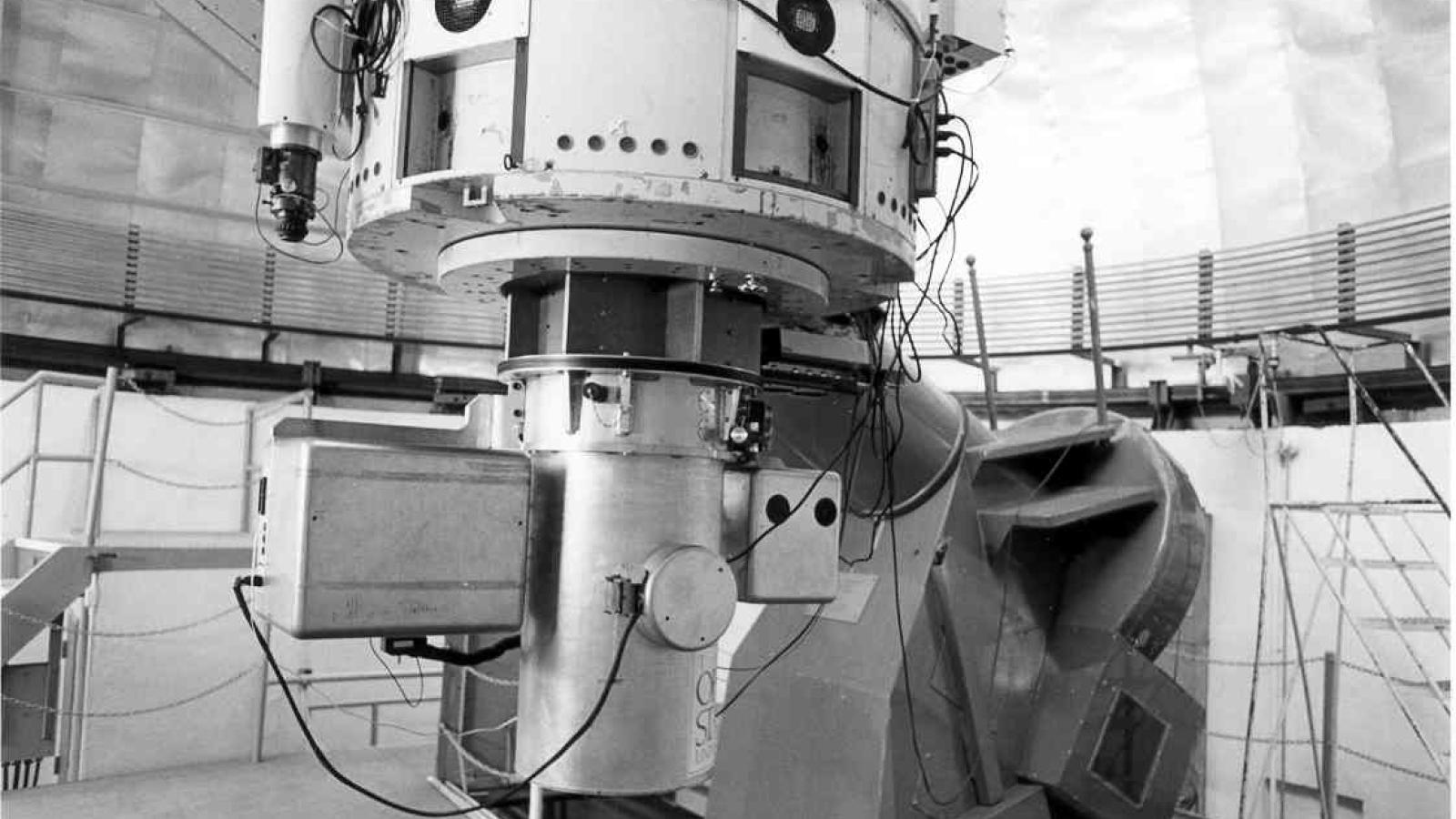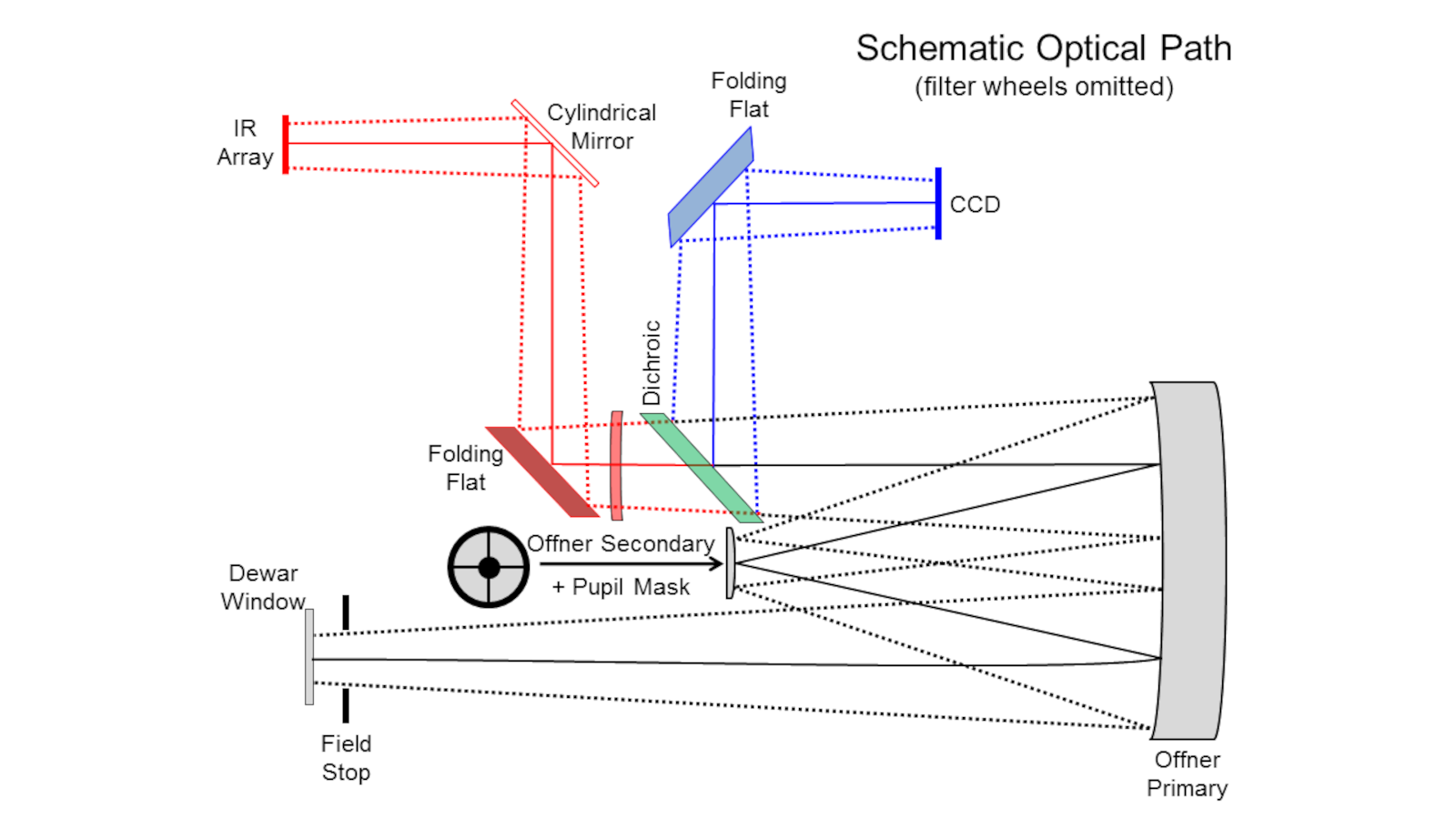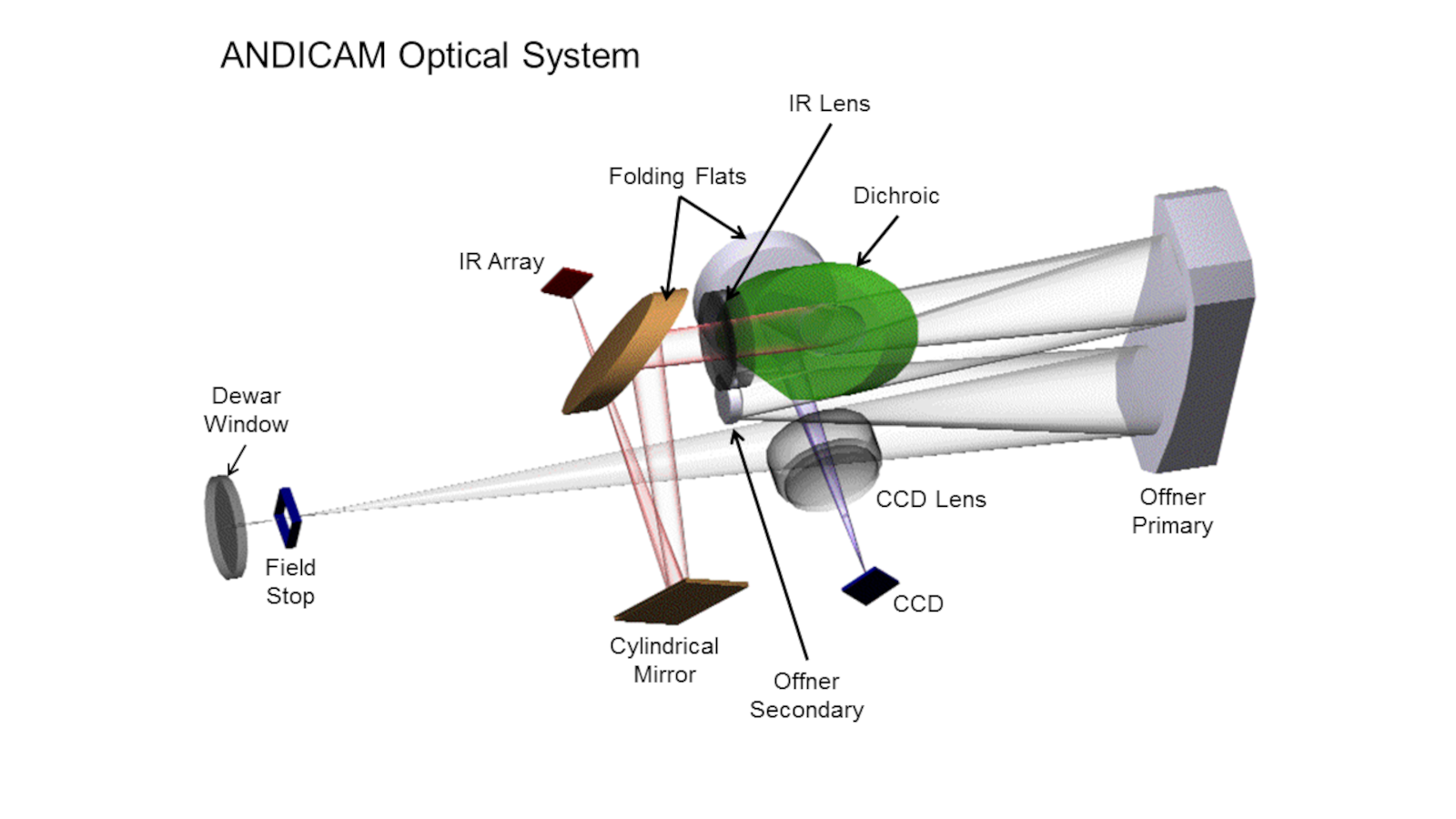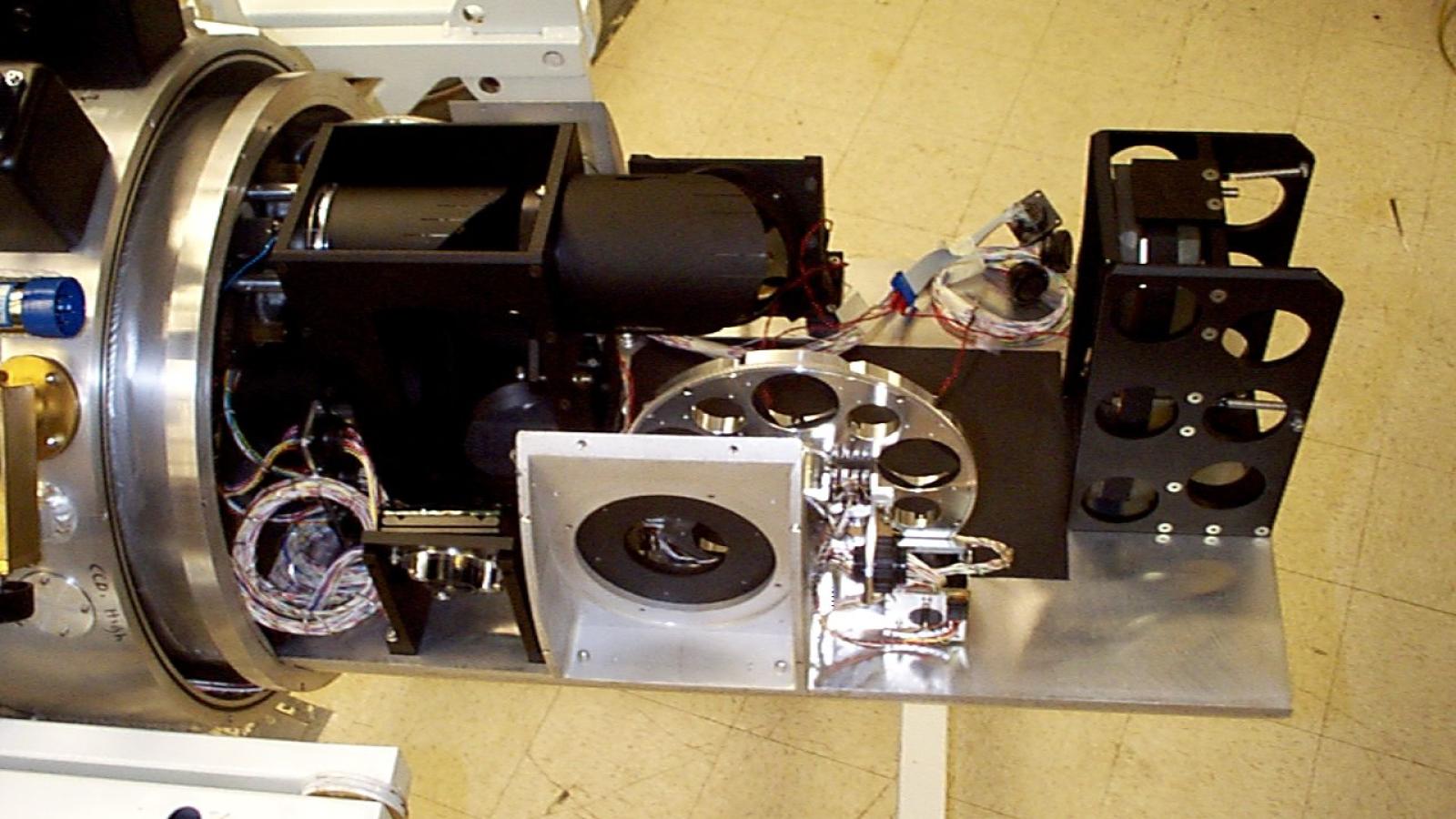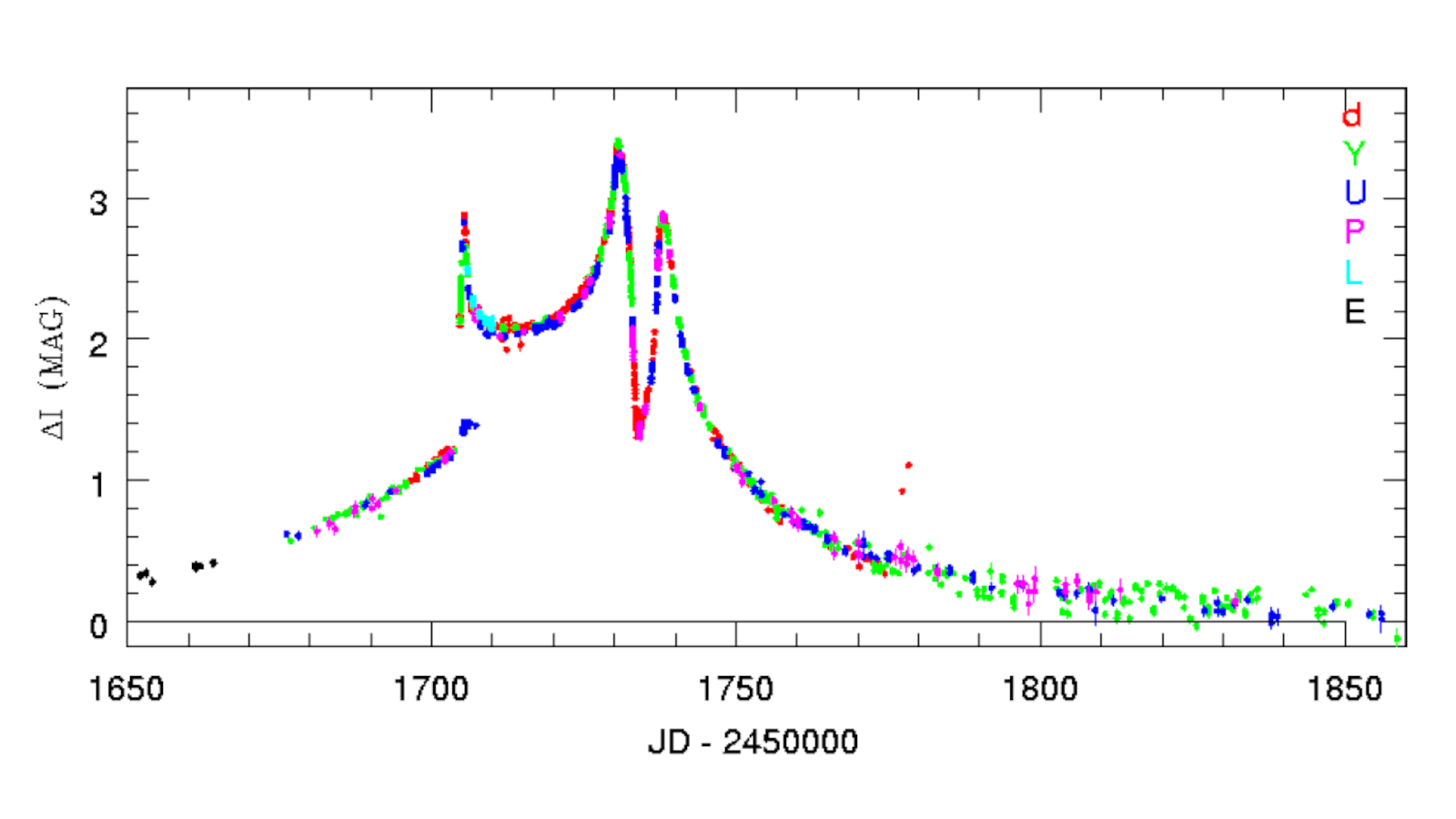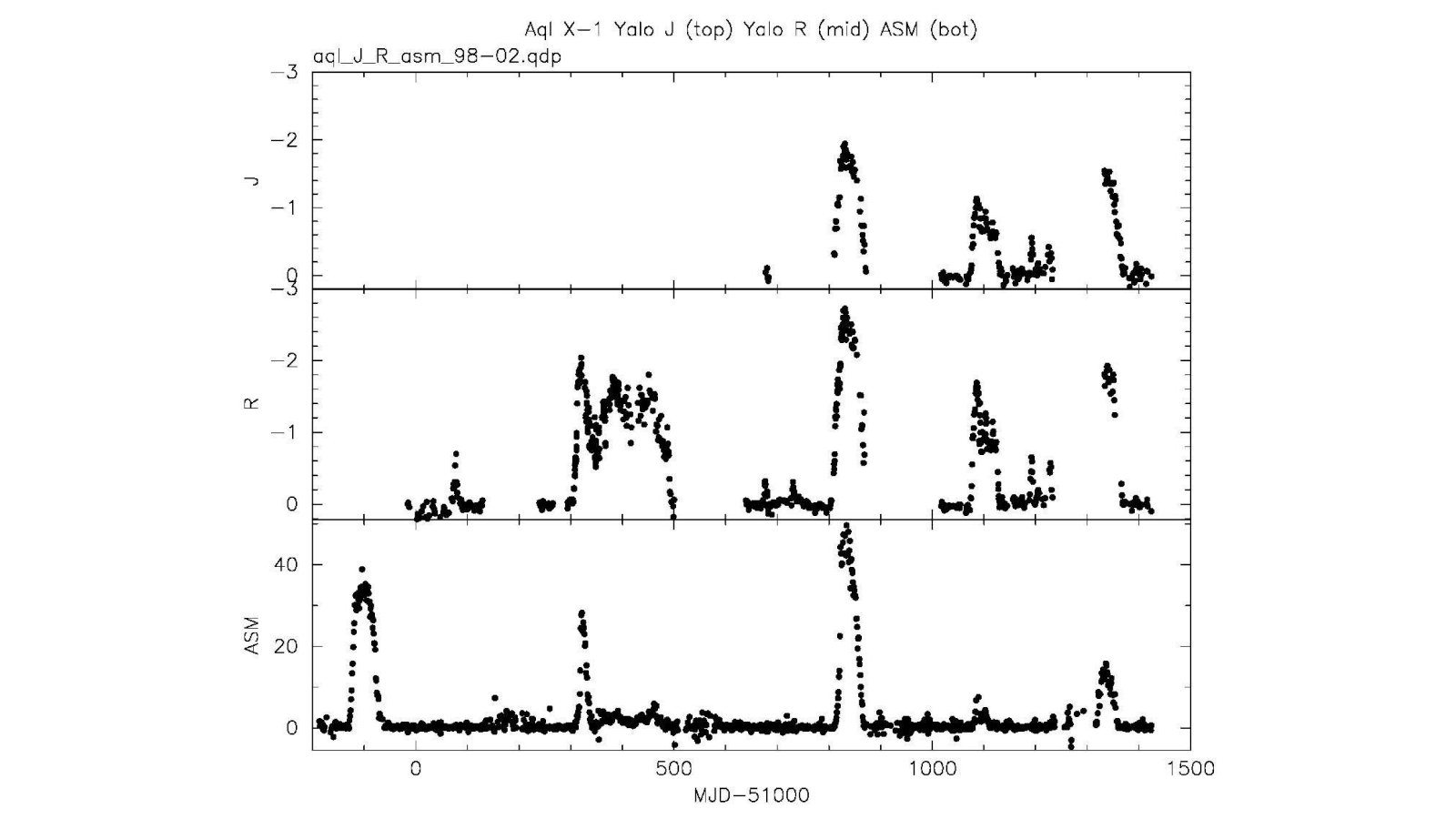A Novel Dual Imaging CAMera (ANDICAM)
ANDICAM (A Novel Dual Imaging CAMera) was the first 2-channel instrument built by the ISL, capable of taking simultaneous images at one optical (UBVRI) and one near-infrared (JHK) filter band. The ANDICAM used the final version of the OSU "Big D" cryogenic optical bench design, and deployed a 1:1 Offner relay, dichroic, and reimaging cameras to image the same field on to an optical CCD and an HgCdTe array.
ANDICAM was first deployed in 1998 at the CTIO Yale 1-m telescope as part of the YALO consortium, a collaboration between Yale, Lisbon University, and Ohio State to operate the Yale 1-m as a dedicated queue-scheduled telescope for undertaking long-term photometric monitoring programs. It operated for 4 years with little or no downtime taking nearly 400,000 images on every clear night. In 2003, ANDICAM moved to the CTIO 1.3m telescope (the former 2MASS South telescope) as part of the SMARTS consortium (Small and Medium Aperture Research Telescope System) to operate CTIO's small and medium telescopes in the same dedicated queue mode as YALO. Overall ANDICAM operated for 21 years until its retirement in 2019 after taking millions of CCD and IR images. It remains one of the most scientifically productive instruments built by the ISL.
Instrument Specification
- Project type: Facility Instrument - 2-channel CCD and IR imager
- Wavelength: 0.36 to 2.5 microns
- Imaging Filters: UBVRI, YJHK plus custom
- Field of View:
- Yale 1-m: CCD 10x10-arcmin, IR 3.3x3.3-arcmin
- CTIO 1.3m: CCD 6x6-arcmin, IR 2.4x2.4-arcmin
- Mode/Modes: simultaneous CCD+IR imaging, internal dithering for IR channel
- Primary science: photometric monitoring: microlensing, galactic, extragalactic, solar system
- Telescopes: CTIO Yale 1-m (1998-2002), CTIO SMARTS 1.3m (2003-2019)
- Years active: 1998-2019
- Reference: DePoy et al. 2003, SPIE, 4841, 827D
Instrument Facts
- ANDICAM operated for 21 years at CTIO acquiring >1million CCD and 2.7 million IR images
- Its first CCD a Lick/Loral 2Kx2K CCD, upgraded to Fairchild 477 2Kx2K CCD in 2003 when it moved to the CTIO 1.3m telescope.
- Its IR array was a Hawaii H1R 1Kx1K HgCdTe sensor.
- A twin instrument was built for the Dutch NSIRC and operated at the SAAO 1-m telescope as the "DANDICAM" from 1999-2005.
- ANDICAM and DANDICAM were pioneers in the development of gravitational microlensing for exoplanet discovery.
- Images of TNOs taken with the ANDICAM played a small role in the discovery of Eris and the "demotion" of Pluto in 2006.
- Some of the IR mechanisms in ANDICAM ran for >2.7 million cycles without failure or noticeable wear
- The primary science case was developed by OSU professor Andy Gould for microlensing exoplanet searches, and the acronym for its name is a play on our early code-name for the project: the "AndyCam".
Instrument Team
Darren DePoy (PI)
Andy Gould (project scientist)
Richard Pogge (instrument scientist)
Paul Byard (Optical Designer)
Bruce Atwood (OSU detector lead)
Tom O'Brien (Mechanical Engineer)
Jerry Mason (Software Systems Developers/Engineer)
Daniel Pappalardo (Electrical Engineer)
Ralph Bellville (Design Engineer)
Ed Teiga (Electronics Technician)
Dave Brewer (Senior Instrument Maker)
Dave Steinbrecher (Senior Instrument Maker)

